Table Of Contents
- 1What is the Student Life Cycle?
- 2How to Manage Key Stages of Student Lifecycle
- 3Importance of Student Lifecycle Management in Higher Education
- 4How Does Technology Play a Role in Student Lifecycle Management?
- 5Platforms to Manage Student Life Cycle Stages
- 6 Benefits of Student Lifecycle Management (SLM)
- 7Choose the Right Student Lifecycle Management Software
- 8Summary
In today’s rapidly evolving higher‑education environment, understanding the student lifecycle is essential. This model outlines a student’s journey—from initial awareness of an institution, through enrollment, engagement, daily campus experience, retention, graduation, and continued connection as alumni. Institutions that manage this journey well foster better outcomes, satisfaction, and long‑term loyalty.
Aquinas University-style institutions investing in lifecycle strategies routinely achieve at least a 20–25% boost in retention, and up to a 30% increase in student satisfaction, according to recent EDUCAUSE surveys and trend reports. A 2025 EDUCAUSE Students and Technology Report also highlighted that students at tech-forward campuses were far more satisfied, with 85% reporting satisfaction versus just 34% at less-advanced schools.
A real-world exemplar is Georgia State University. Beginning in the early 2010s, it launched a predictive analytics initiative (GPS Advising) that tracks over 800 risk indicators nightly, triggers proactive outreach, and funds micro‑grants to prevent drop‑outs. Since then, their six‑year graduation rate rose by about 23 percentage points, closing equity gaps across race and income—and generating millions in additional revenue annually.
Georgia State’s data shows its four-year graduation rate improved by approximately 7 points, and retention gains yield roughly $3.2 million in revenue for every 1% rise in retention. Partner schools working with their National Institute for Student Success (NISS) saw first-year retention increase by 6.7 points on average from fall 2022 to 2023.
In essence, the student lifecycle is typically broken into six stages—Awareness, Enrollment, Engagement, Retention, Graduation, and Alumni Relations. Strategic management means leveraging personalised digital communication, predictive analytics, CRM systems, and student‑centric supports to guide students seamlessly through each phase.
As competition intensifies and expectations rise, institutions that invest in a whole lifecycle approach stay ahead—not just in metrics, but in creating long‑term ambassadors.
What is the Student Life Cycle?
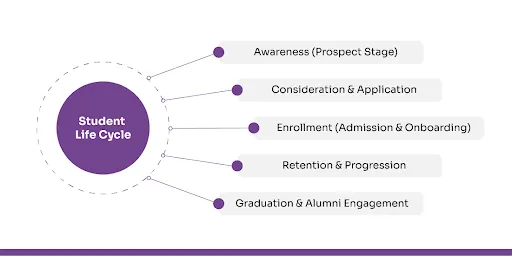
The Student Life Cycle refers to the complete journey a student undertakes with an educational institution—from the very first point of contact (as a prospective student) through graduation and continuing as an alumnus. It helps institutions map out and manage every interaction with the student to optimise their experience, improve outcomes, and build long-term engagement.
This model is not only essential for admissions and enrollment offices but also for academic advisors, marketing teams, faculty, and alumni relations departments. When managed effectively, the student life cycle supports higher retention rates, increased student satisfaction, and stronger alumni networks.
With rising competition, shifting demographics, and student expectations evolving rapidly (especially in a post-COVID digital-first world), lifecycle management has become a strategic priority in higher education institutions worldwide.
The student life cycle can be divided into 5 core stages, each with its own goals, tools, and outcomes. Let’s explore them step by step:
Awareness (Prospect Stage)
This is the first moment a potential student becomes aware of your institution. It could be through a digital ad, university ranking, social media reel, friend recommendation, or school fair.
University of Southern California uses targeted YouTube and Instagram ads to promote niche programs like Game Design, generating a 12% increase in international applications in 2023.
Consideration & Application
Now that students know your university, they start researching more. This is your chance to help them evaluate their fit and guide them toward applying.
University of Toronto improved application conversions by 18% after integrating personalised email campaigns and real-time chatbots on its admissions page.
Enrollment (Admission & Onboarding)
Once a student receives an offer, the goal is to officially enroll them and provide a seamless onboarding experience.
Georgia State University tracks over 800 risk indicators daily and sends alerts to advisors when students fall behind—leading to a 32% increase in on-time graduations.
Retention & Progression
This stage ensures students don’t drop out mid-program and continue making academic progress.
Purdue University uses predictive analytics to anticipate student dropout risks and achieved a 91% first-year retention rate in 2024.
Graduation & Alumni Engagement
Once students graduate, institutions should maintain the relationship to foster loyalty, support, and continued engagement.
Harvard Business School uses an integrated alumni platform offering lifelong learning modules, networking, and regional chapters, leading to strong alumni participation and donation rates.
How to Manage Key Stages of Student Lifecycle
Here are the key stages that require intervention and interactions from an institution during the student’s journey.
Awareness (Prospect Stage)
Maximise visibility, target right-fit students, and spark interest.
- Invest in SEO and Content Marketing: Blog posts, student testimonials, and YouTube videos showcasing campus life rank high on Google.
- Use Social Media Strategically: Platforms like Instagram, YouTube Shorts, and LinkedIn can effectively reach Gen Z.
- Personalise Ads & Outreach: Use geolocation and behavioural targeting for digital ads.
- Leverage Influencer & Alumni Marketing: Let alumni and current students share their stories.
Tool Suggestion: Google Ads, Meta Ads Manager, Unibuddy, Sprout Social
Consideration & Application
Help students explore, compare, and apply confidently.
- Simplify Application Processes: Minimise clicks, steps, and unnecessary document uploads.
- Offer Virtual Counsellors or Chatbots: Instant responses improve engagement and reduce dropout during the application.
- Host Webinars/Q&As with Faculty or Students: Builds trust and gives clarity.
- Showcase Outcomes: Highlight career placements, internship stats, and ROI.
Tool Suggestion: Intercom, LiveChat, Common App integrations, Element451
Enrollment & Onboarding
Ensure a smooth transition from admission to active student.
- Create a Digital Welcome Hub: Provide step-by-step onboarding with checklists, videos, and deadlines.
- Assign Peer Mentors or Advisors Early: Human connection reduces melt and builds belonging.
- Offer Pre-arrival Courses or Bootcamps: Especially useful for international or first-gen students.
- Use Mobile Notifications: Automate reminders about forms, housing, fees, and other important reminders.
Tool Suggestion: Comevo, Mongoose Cadence, Ellucian Banner, PeopleGrove
Engagement (Academic & Campus Life)
Keep students motivated, involved, and supported.
- Introduce Student Engagement Platforms: Use gamified tools for clubs, attendance, and activities.
- Early Alert Systems: Faculty flag students falling behind; advisors intervene fast.
- Feedback Culture: Use micro-surveys and real-time polls in classes.
- Mental Health & Well-being Resources: Normalise and promote counselling, peer support, and wellness activities.
Tool Suggestion: CampusGroups, Poll Everywhere, Starfish, Suitable
Retention & Progression
Prevent dropouts, ensure academic progress, and offer support.
- Use Predictive Analytics: Identify at-risk students before they disengage.
- Offer Flexible Learning Options: Hybrid classes, summer credits, and part-time options help retain non-traditional students.
- Create Personalised Pathways: Advisors help students track milestones and credits.
- Provide Emergency Financial Aid or Micro-grants: A major dropout trigger is sudden financial stress.
Tool Suggestion: Civitas Learning, EAB Navigate, DegreeWorks, Modo Campus
Graduation & Alumni Engagement
Maintain lifelong relationships and transform graduates into advocates.
- Build a Strong Alumni Portal: Offer job boards, lifelong learning courses, and social networking.
- Automate Post-Graduation Outreach: Celebrate their achievement and invite continued connection.
- Leverage Alumni as Mentors & Donors: Involve them in admissions, placements, and campaigns.
- Track Career Outcomes: Show future students how alumni succeed post-graduation.
Tool Suggestion: Graduway, EverTrue, Hivebrite, Salesforce Education Cloud
Importance of Student Lifecycle Management in Higher Education
In this section, we discuss why universities should invest in a comprehensive student lifecycle management strategy. This approach not only helps the institution gain a holistic view of student engagement but also enhances internal processes to foster a data-driven environment.
Improves Retention and Graduation Rates
SLM helps institutions keep students engaged and supported throughout their academic journey. By identifying when students are disengaging or at risk of dropping out, schools can provide targeted interventions like academic advising, tutoring, or financial aid. Consistent tracking of educational progress, attendance, and emotional well-being increases the chances of students staying enrolled and graduating on time.
- Georgia State University uses predictive analytics to track over 800 risk indicators daily. As a result, they added over 40,000 additional graduates per year and saw a significant increase in graduation rates—especially among low-income and first-gen students.
- Many institutions have witnessed increased retention: a case study using CRM identified 20% of first‑year students at risk, with 75% of those retaining into the next year after targeted intervention.
Enables Proactive, Data-Driven Interventions
SLM allows institutions to shift from reactive to proactive support. Using tools like predictive analytics and CRM systems, universities can identify struggling students before they fail or drop out. This means advisors can reach out early, offer resources, and monitor progress more accurately.
- Eastern Michigan University found that over 55% of undergraduates were failing to complete their degrees in 6 years. Using AI and data models, they began predicting which students were likely to struggle and offering early interventions.
Enhances Student Engagement and Experience
Engaged students are more likely to perform better, persist in their studies, and build meaningful connections. SLM helps institutions offer personalised experiences—from welcome messages and student clubs to targeted mental health support and career mentoring.
According to the National Survey of Student Engagement (NSSE), students who participate in high-impact practices (e.g. internships, learning communities) show greater satisfaction and stronger academic outcomes.
Reduces Administrative Burden and Increases Efficiency
SLM systems, especially CRM platforms, automate repetitive tasks like application tracking, fee reminders, onboarding workflows, and academic alerts. This reduces staff workload and allows more time to support students directly.
Institutions using integrated CRM platforms report up to 40% reduction in administrative time, and 20–30% increase in conversion and retention rates due to timely outreach and automation.
Supports Strategic Enrollment and Long-Term Planning
SLM aligns with Strategic Enrollment Management (SEM)—a structured approach to attract, enroll, and retain students in line with institutional mission, capacity, and market needs. It allows long-term forecasting and targeted marketing.
Universities implementing SEM models have reported better alignment between enrollment goals and institutional growth, increasing student diversity and stabilising revenue streams.
How Does Technology Play a Role in Student Lifecycle Management?
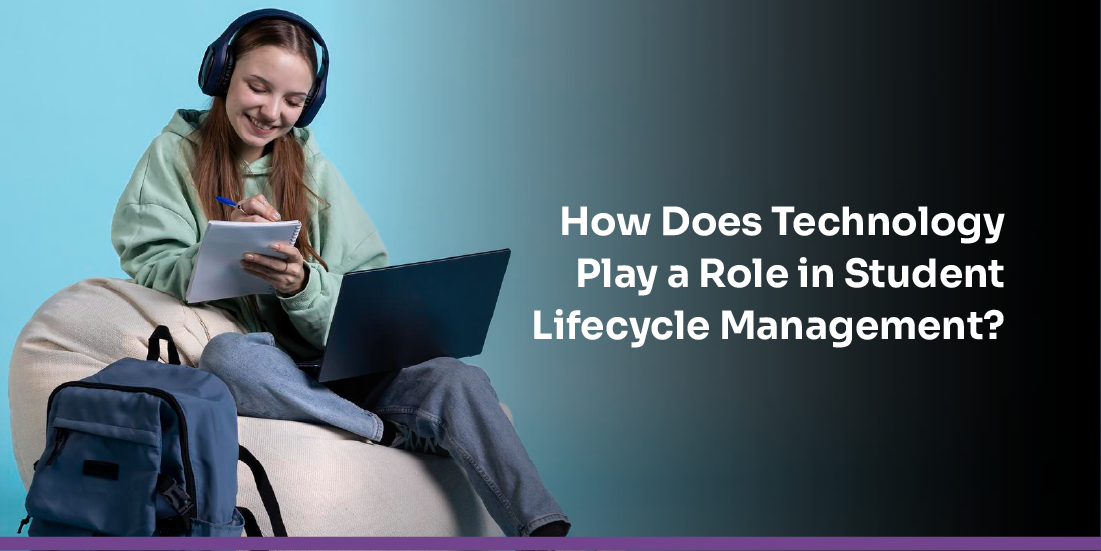
In the digital age, technology is no longer just a supporting tool—it’s the backbone of effective Student Lifecycle Management (SLM). From the moment a student discovers a university to the day they become a lifelong alumnus, tech solutions play a critical role in ensuring a smooth, engaging, and data-driven experience.
Modern education institutions are increasingly using AI, predictive analytics, CRM systems, mobile apps, and learning platforms to personalise interactions, boost student success, and operate efficiently. A 2024 Educause report revealed that 74% of universities plan to increase investments in student experience platforms, with a focus on automation, analytics, and personalisation.
Let’s explore how technology enhances each phase of the student lifecycle:
Student Attraction & Awareness
- Digital marketing tools target the right audiences through SEO, social media, and behavioural analytics.
- Chatbots and virtual info sessions offer 24/7 answers and real-time engagement.
Tools: Google Ads, Meta Business Suite, Unibuddy, Mautic, ChatGPT-based bots
Application & Admission
- CRM platforms manage outreach, follow-ups, and application status updates.
- AI-driven tools analyse documents and automate eligibility decisions.
Tools: Slate CRM, Salesforce Education Cloud, Document Intelligence tools, Common App integrations
Enrollment & Onboarding
- Student portals and mobile apps guide admitted students through steps like fee payment, housing, visa support, and orientation.
- Automated reminders reduce summer melt.
Tools: Ellucian Banner, PeopleSoft Campus Solutions, Comevo, Mongoose Cadence
Academic Engagement & Learning
- Learning Management Systems (LMS) support hybrid learning, assignment tracking, and feedback loops.
- Gamified apps encourage participation in co-curriculars and student clubs.
Tools: Moodle, Canvas, Blackboard, Kahoot!, CampusGroups, Suitable
Retention & Student Support
- Predictive analytics flags at-risk students using GPA trends, attendance, and LMS activity.
- Early alert systems trigger academic and mental health interventions.
Tools: Civitas Learning, Starfish, EAB Navigate, Power BI
Graduation & Alumni Engagement
- Alumni platforms help manage networks, events, and fundraising.
- Credentialing software enables digital diplomas and career tracking.
Tools: Graduway, Hivebrite, EverTrue, Parchment
Platforms to Manage Student Life Cycle Stages
Each stage of the student lifecycle requires specific tools to streamline operations, enhance engagement, and improve outcomes. Below is a breakdown of recommended platforms by lifecycle stage:
Awareness & Attraction (Prospect Stage)
To reach and attract potential students.
Top Platforms:
- HubSpot / Salesforce Marketing Cloud – Lead nurturing, email campaigns, and performance tracking.
- Unibuddy – Enables peer-to-peer student conversations to influence decision-making.
- Mautic – Open-source marketing automation with personalised outreach tools.
- Google Ads / Meta Business Suite – Paid media campaigns to boost visibility.
Application & Admission
To manage inquiries, applications, and offer communications.
Top Platforms:
- Slate CRM – Widely used for application management and communications.
- Element451 – AI-powered admissions CRM with automation and personalisation.
- Common App Integration – Centralises student applications across institutions.
- Technolutions – Supports custom application workflows and analytics.
Enrollment & Onboarding
To guide admitted students through pre-arrival and initial setup.
Top Platforms:
- Ellucian Banner / Colleague – Student Information Systems (SIS) for enrollment and data records.
- PeopleSoft Campus Solutions – End-to-end enrollment, registration, and financial aid processing.
- Comevo – Online orientation and onboarding tool for new students.
- Mongoose Cadence – Text messaging platform for timely reminders and communication.
Academic Engagement & Experience
To manage coursework, learning, and student involvement.
Top Platforms:
- Canvas / Blackboard / Moodle – Learning Management Systems (LMS) for academic delivery.
- CampusGroups / Suitable – Gamified engagement tracking for co-curricular activities.
- Kahoot! / Poll Everywhere – In-class interactive tools for active learning.
- Zoom / MS Teams – For virtual classes, group work, and faculty collaboration.
Retention & Student Success
The goal is to identify at-risk students, monitor progress, and provide support.
Top Platforms:
- Civitas Learning – Uses predictive analytics to intervene early for struggling students.
- Starfish by Hobsons – Connects students with advisors and provides alert systems.
- EAB Navigate – Tracks academic progress and promotes intervention strategies.
- Watermark Insights – Supports outcomes assessment and engagement tracking.
Graduation & Alumni Engagement
To maintain alumni relationships and promote long-term engagement.
Top Platforms:
- Graduway / Hivebrite – Alumni platforms for networking, mentoring, and fundraising.
- EverTrue – CRM focused on donor engagement and alumni giving.
- Salesforce Alumni Experience – Tracks alumni lifecycle and event participation.
- Parchment / Credly – Manages digital diplomas, credentials, and verification.
Benefits of Student Lifecycle Management (SLM)
In today’s data-driven and student-centric education environment, Student Lifecycle Management (SLM) has become an essential strategy for universities and colleges. It refers to the systematic coordination of every phase of the student journey—from initial awareness and enrollment to graduation and alumni engagement.
By integrating tools, automating communication, and analysing student behaviours in real time, SLM enables institutions to not only operate more efficiently but also personalise student experiences, reduce dropouts, and foster lifelong engagement. It empowers institutions to make smarter decisions, increase student satisfaction, and build sustainable success.
Improved Student Retention and Graduation Rates
- Student Lifecycle Management systems monitor academic performance, attendance, and engagement data to detect early signs of student disengagement or risk.
- With this data, universities can proactively intervene through personalised academic advising, tutoring support, or financial aid—helping more students stay enrolled and graduate on time.
Enhanced Student Engagement and Satisfaction
- SLM tools deliver personalised messages, event invites, and academic updates tailored to each student’s needs and interests.
- This level of targeted communication and access to support services increases a student’s connection to campus life, improving both satisfaction and overall success.
Streamlined Administrative Processes
- SLM platforms automate repetitive administrative tasks like document processing, follow-up emails, scheduling, and status tracking.
- This reduces manual workload for staff, minimises errors, and allows faculty and support teams to focus more on student-facing activities.
Data-Driven Decision Making
- Institutions collect real-time data on student behaviour, performance, and engagement through integrated SLM systems.
- These insights allow universities to make informed decisions on curriculum planning, resource allocation, and support strategies based on actual student needs.
Boosted Enrollment and Conversion Rates
- Marketing automation and CRM platforms nurture prospective students with timely, personalised communication across email, SMS, and social media.
- This leads to stronger applicant engagement, higher trust in the institution, and a higher conversion rate of inquiries into enrollments.
Seamless Student Experience Across the Journey
- From application to graduation, SLM ensures students receive consistent information and smooth access to services through unified portals or mobile apps.
- This seamless experience helps reduce confusion, builds trust, and ensures students feel supported at every stage of their academic journey.
Stronger Alumni Relations and Career Outcomes
- SLM platforms help maintain post-graduation relationships through alumni communities, event invitations, and mentorship opportunities.
- They also connect students with internships and jobs via employer networks, improving post-college outcomes and institutional reputation.
Choose the Right Student Lifecycle Management Software
Choosing the proper Student Lifecycle Management (SLM) software is key to improving student engagement, retention, and institutional efficiency. The ideal platform should streamline the entire student journey—from recruitment to alumni engagement—while offering automation, real-time insights, and a user-friendly experience. Here are the top factors to consider when making your decision.
Understand Your Institution’s Needs
Identify your key challenges (e.g., low retention, poor engagement, complex admissions) and find a tool that directly addresses them.
Check Full Lifecycle Coverage
Ensure the platform covers all stages—recruitment, admissions, academics, support, career services, and alumni engagement.
Look for Seamless Integration
The software should integrate easily with your existing LMS, CRM, SIS, and communication platforms to ensure data consistency.
Prioritise User Experience
Choose a platform with an intuitive interface for students, faculty, and staff—ideally with mobile access and self-service options.
Evaluate Automation & Personalisation Features
Look for automation in emails, alerts, onboarding, and engagement workflows, plus personalised student journey options.
Analyse Analytics and Reporting Capabilities
Powerful data dashboards and predictive analytics help identify trends, improve decisions, and support at-risk students.
Ensure Security and Compliance
Check for compliance with local and global data privacy laws (like FERPA or GDPR) and strong security protocols.
Check Vendor Support and Training
A reliable vendor offers onboarding, continuous support, regular updates, and training resources for smooth adoption.
Review Scalability and Customisation
Your SLM platform should grow with your institution and allow customisation to match your workflows and branding.
Compare Costs vs Value (ROI)
Assess the licensing model, hidden costs, and expected ROI in terms of time savings, student success, and retention impact.
Summary
Understanding and managing the student lifecycle—from first awareness to alumni engagement—is now critical for higher education success. Institutions that implement data-driven strategies and use technology like CRM systems and predictive analytics see higher retention, stronger engagement, and better outcomes. Georgia State University, for example, used such tools to significantly boost graduation rates. Student Lifecycle Management (SLM) platforms streamline this journey, improve decision-making, and personalise support. Choosing the right software means ensuring full lifecycle coverage, seamless integration, and scalability. In a competitive landscape, SLM not only enhances student experience but also builds lasting institutional value.

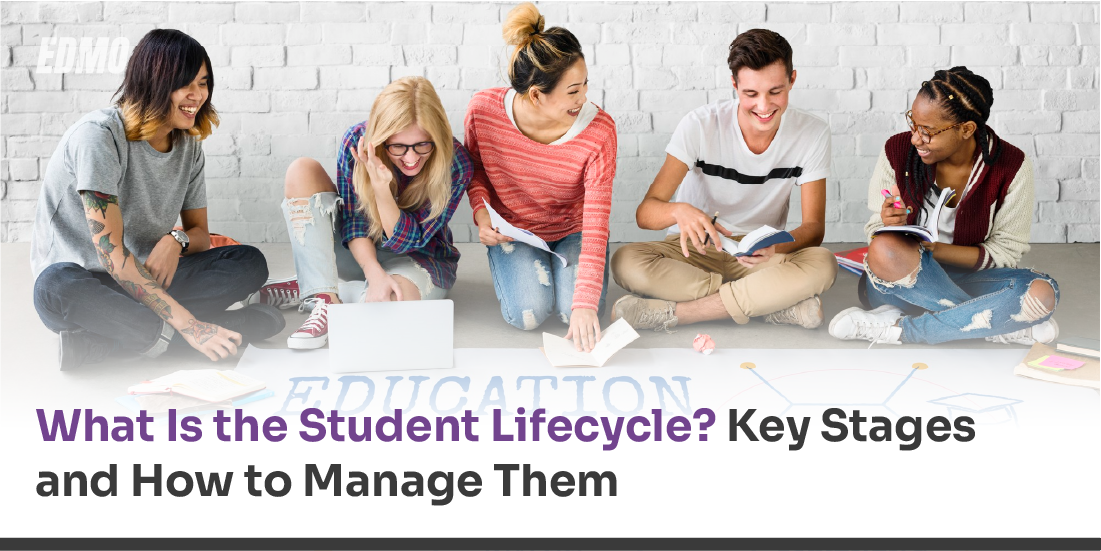



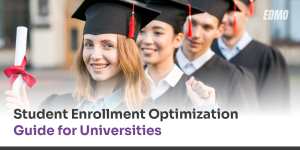
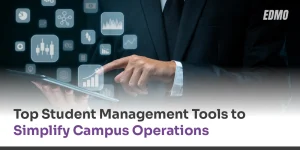
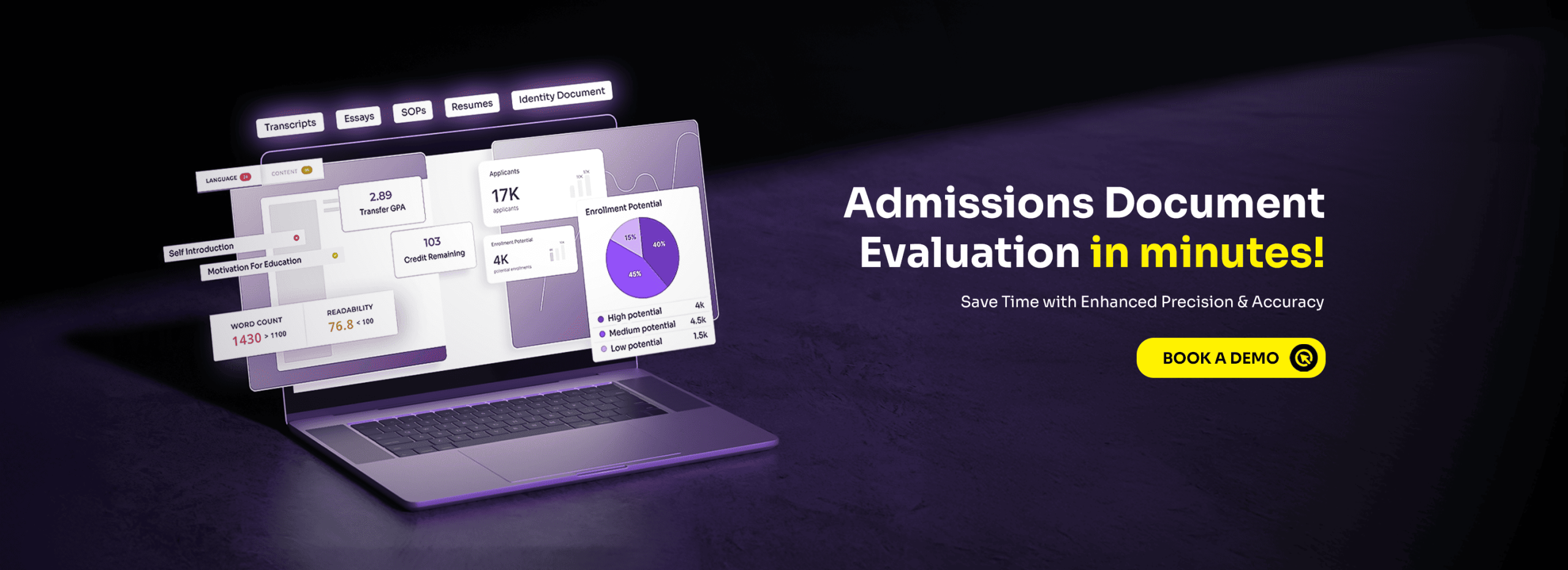

No comments yet. Be the first to comment!
Leave a Comment